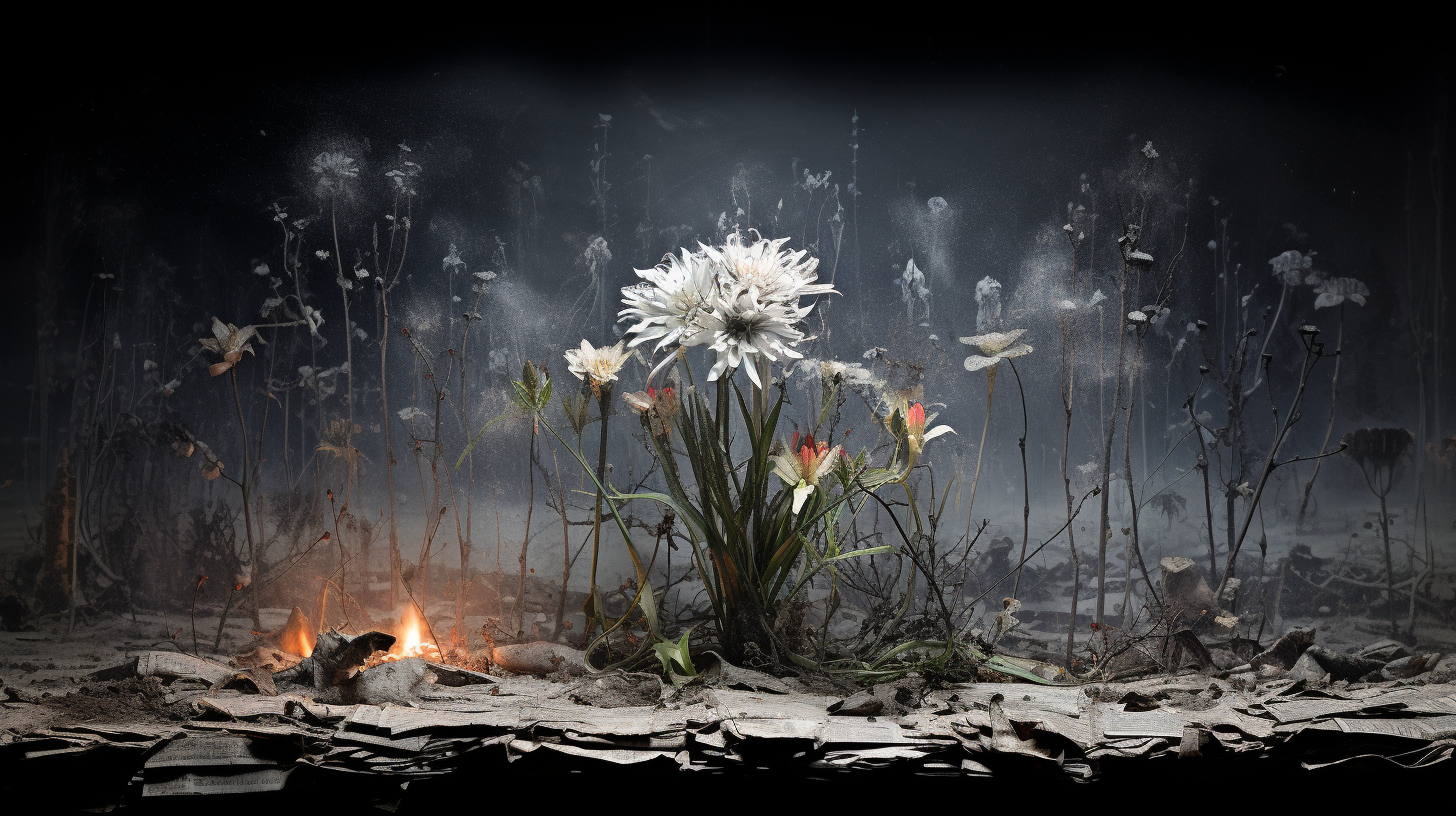In a world where the spring’s symphony has fallen silent, we find ourselves wandering through a season stripped of its vibrancy, a bleak echo of its former self. The Silent Spring Revisited – No Buzz, No Blooms paints a harrowing picture of the present-day environmental scenario, one where the hum of bees is a rarity and wildflowers no longer sway in the wind.
As one meanders through the arboreal graveyards, the stark absence of pollinators hints at a catastrophic break in the chain of life. Monocultures and chemical warfare waged against pests have wiped out insect populations, leaving crops untouched by the once diligent workers. The domino effect is chillingly clear: no bees, no pollination; no pollination, no food.
More than just a downfall of agriculture, it’s a world marked by sterile gardens and silent meadows. Gone are the days when children would chase butterflies through the blooming fields. Instead, climate refugees from rural heartlands speak of hardships, of lands that no longer bear fruit and of skies ominously quiet. Biologists and ecologists mourn the lost biodiversity as a genetic library razed to the ground.
Amidst this desolation, scientific communities battle valiantly against time. Laboratories attempt to engineer robotic pollinators and gene-editing solutions that strive to adapt plants to this new, harsh reality. But these are mere drops in the ocean, strikingly inadequate against the widespread ecological collapse.
A glimpse of hope, though flickering, surfaces in the resilience of nature. Tales from the fringes of civilization tell of wild patches where nature reclaims its space, where flowers, though few, still bloom, and where the wild bees, remnants of a once-abundant population, struggle to re-establish the broken lines of pollination. It’s in these pockets of resistance that we see evidence that all is not lost—yet.
It begs the question: Are we witnessing the final chapters of nature’s generosity or the prologue to humanity’s awakening to her plight? The resemblance to Rachel Carson’s ‘Silent Spring’ prophecy is uncanny and unnerving. We’re living the very dystopia she predicted, paradoxically symbolizing both an end and a potential new beginning. The past articles mirrored these sentiments, highlighting the decimation of our agriculture and the haunting emptiness of our farms, but also acknowledging the innovative efforts to heal and restore.
A vision for the future can be seen through the fog of despair. There are communities embracing permaculture, pushing for policy changes, and educating the next generation on the paramount importance of biodiversity. They champion a world where nature and agriculture coexist, where the spring’s buzz is the soundtrack to a thriving ecosystem.
The question remains: Can humanity take decisive action before the credits roll on this ecological thriller? Or will future springs be forever silent, a cautionary backdrop to a world that could have been?
This silent spring is our final wake-up call. It is a siren song towards either our salvation or our downfall. The choices we make today—to heed the calls, to reshape our interaction with nature, to restore what we’ve destroyed—are the pen strokes in the closing paragraph of this spring’s story.
